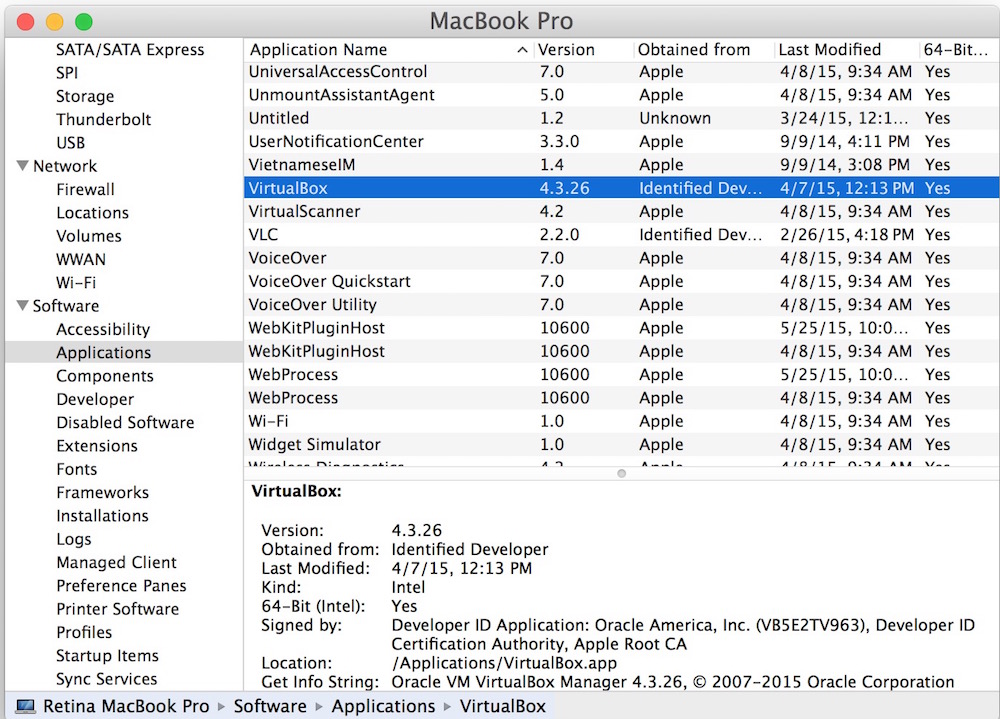Oracle Client For Mac Sierra
Posted By admin On 13.12.18IBM Client Application Access (ICAA) 1.0.0.1 Feature Pack 1 due out in November 2016 will support macOS Sierra. ICAA for Mac 64-bit is a lightweight solution that helps clients who want to move to a browser-based interface for email (IBM SmartCloud Notes web, IBM Verse, or iNotes), while continuing to work with existing Notes and Domino. Apparently Oracle substantially changed 'library setups' for sqlplus/instantclient 12.2. (So instructions for 12.1 no longer apply) Plus techniques (export LD_LIBRARY_PATH) that worked on older versions of MacOSX no longer work.

Onedreive client for mac. • • • • Fix macOS Sierra Screen Resolution on VirtualBox It is a very popular and famous problem for those who install Mac operating system on VMware or VirtualBox. For the first time when you install macOS Sierra or Mac OS X El Capitan on VirtualBox or VMware, the first error that you see is screen resolution and some other problem. By default when you install Mac Operating system on Virtualization software, most of the time the screen resolution is 1024×768 and you can change it on VirtualBox to “ 640×480, 800×600, 1280×1024, 1440×900, 1900×1200“. As an example, I want to change the resolution from 1024×768 to 1440×900.
I hope you get something from this pictorial tutorial. Related Post: Step #1. Play your installed macOS Sierra on VirtualBox and confirm the current and default screen resolution. After that turn off your VirtualBox VM and close all VirtualBox tabs.
Torrent Client For Mac
Here is my episode: ALL VM OFF and VB QUIT! SET: VBoxManage setextradata “Sierra” VBoxInternal2/EfiHorizontalResolution 1900 2. GET: VBoxManage getextradata “Sierra” VBoxInternal2/EfiHorizontalResolution give me: Value:1200 3. (same with Vertical) 4.
Run VM > Niiiiiiiiiiit > 1024×768 🙁 5. Re-run GET: VBoxManage getextradata “Sierra” VBoxInternal2/EfiHorizontalResolution give me: No Value Set All is done in ADMIN mode 🙁 VB 5.2.4 r119785 Sierra 10.12.6 Windows 10 64 bits Any idea?
Thanks a lot, and Happy NewYear:-p.
Install Oracle Client
Step 1: Download You will need to download at least 3 files from oracle. In order to do so, you may need to register as an Oracle developer, or log in. The three files you need are the “basic”, “SDK” and “sqlplus” files for instantclient. They can all be found.
• instantclient-basic-macosx.zip • instantclient-sdk-macosx.zip • instantclient-sqlplus-macosx.zip Download them to a temporary folder on your machine. Step 2: Uncompress and Copy Files Uncompress the files to the /op/oracle/ folder on your machine.
You will have to first create the folder: sudo mkdir -p /opt/oracle Then uncompress the zip files in to that folder. You can do this from your temp directory with this command: cd /opt/oracle sudo unzip ~/Downloads/oracle/instantclient- *.zip After you uncompress the files, you can create an alias for the instantclient folder. This will enable you to upgrade later, simply by changing where the link points. Native twitter client for mac.

Oracle 11g For Mac
Sudo ln -s instantclient_11_2/ instantclient Now some of the dylib files include versions in their filenames, but some programs such as SQL*Plus do not look for the versioned file, they look for the generic filename. So to resolve that problem, we need to also create links for them. Sudo ln -s libclntsh.dylib.11.1 libclntsh.dylib sudo ln -s libocci.dylib.11.1 libocci.dylib So up to this point, we now have all the files on our machine, and are ready to start configuring oracle client. Step 3: Configure Oracle You can configure oracle for all users of the system (and that is part of the reason we placed all the files in /opt/oracle instead of the users home folder.) But this configuration is per user, not system wide. Modify the users.bash_profile, and add the following lines: # oracle export ORACLE_HOME=/opt/oracle/instantclient export DYLD_LIBRARY_PATH=$ORACLE_HOME export LD_LIBRARY_PATH=$ORACLE_HOME export NLS_LANG=AMERICAN_AMERICA.UTF8 export TNS_ADMIN=$HOME/etc export PATH=$PATH:$ORACLE_HOME You can set the NLS_LANG to be whatever is right for your situation, I choose AMERICAN_AMERICA.UTF8 since that is correct for me.
You will also note I did not set the TNS_ADMIN folder to be /etc, the default location, instead I placed it in the users home directory. This is up to you, I find it easier to have each user manage their own TNS_NAMES. Finally it adds the executables to the path. Once that is finished you can source the file, or open another terminal window, and then you will be able to run SQL*Plus. Source ~/.bash_profile sqlplus You should be greeted by the version of the release that you just installed.
To configure your tns_names.ora file, if needed, you should create the directory etc in your home folder, and ad the file. Mkdir ~/etc touch tnsnames.ora Using your favorite editor, edit the tnsnames.ora file. For more information on configuring the file, check this. After doing this a few times, I made a bash file that can do most of the work for you. You have to run this script from the folder after you have downloaded the oracle zip files.